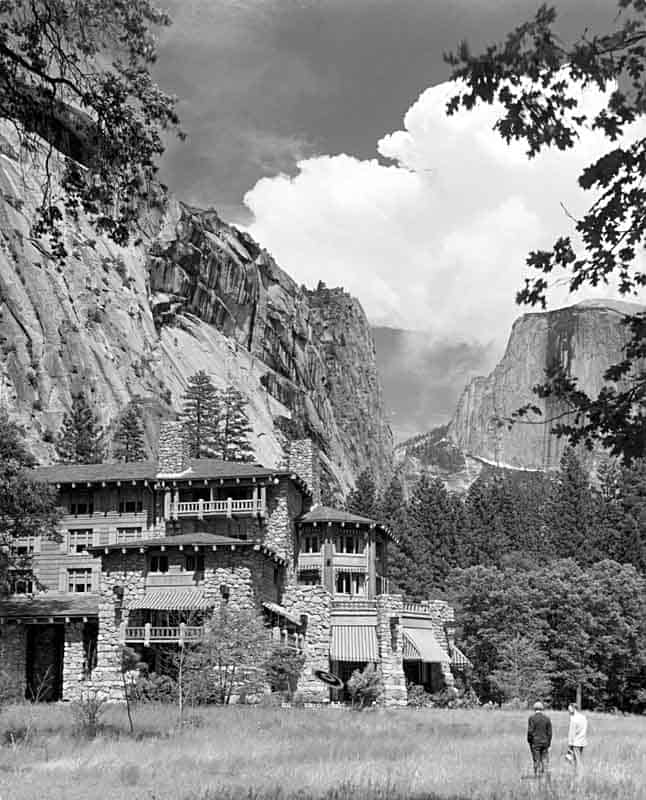History of Yosemite
The Sierra Nevada Range is relatively young in geological terms. The range came to be as a result of tectonic plate movement and rising magma cooling to granite. Glaciers scraped, shaped, and polished that granite to create the beauty of Yosemite. The Sierra Nevada range only really began to rise to its current elevations 5 million years ago.
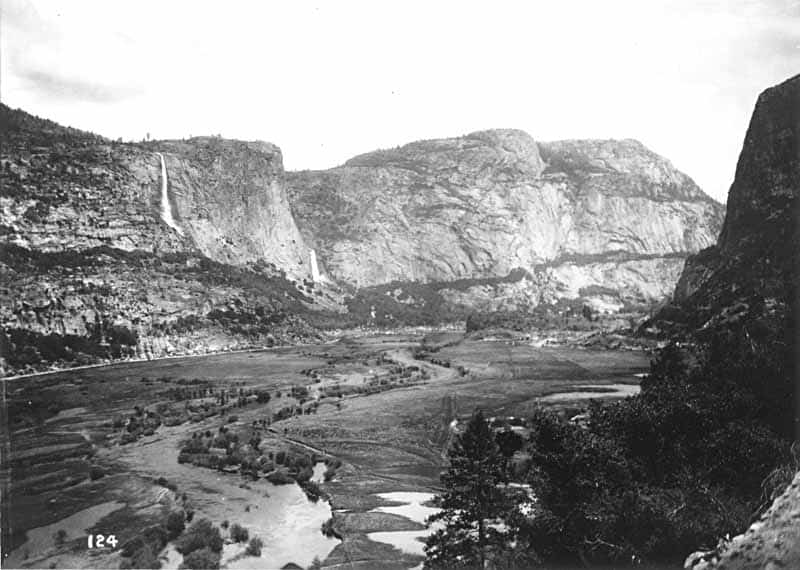
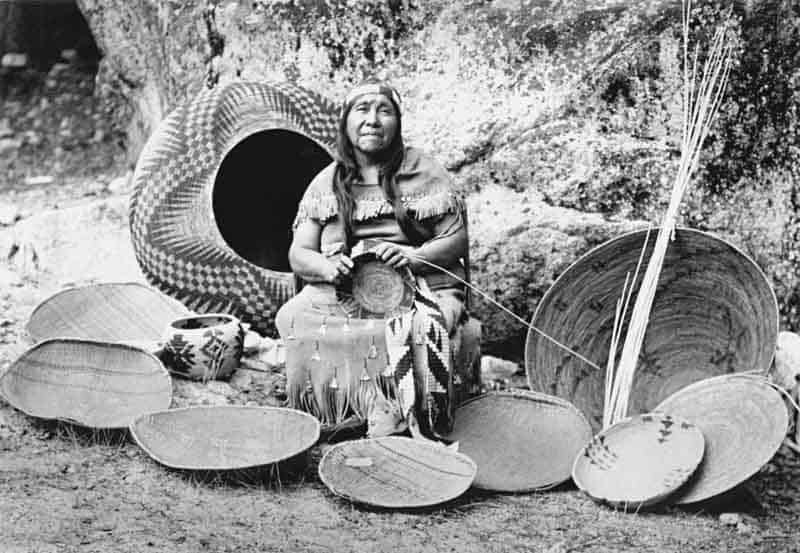
The History of Yosemite in human terms began 7 to 10 thousand years ago. The most recent indigenous inhabitants of Yosemite were related to the southern Sierra Miwoks. They called the valley Awani (Ahwanee) and referred to themselves as Ahwaneetci. The granite walls made the valley an inaccessible fortress for the Awhaneetci.
There its some evidence that an 18th century plague devastated this group leaving survivors to move out of the valley and assimilate with other tribes.
One offspring of the Awahneetchi who left the valley returned to resettle Yosemite Valley with a group of 300. Tenaya and his group were hunters and gatherers who maintained trade relationships with other Sierra Nevada and Central Valley tribes . It was that group that had the first encounters with encroaching white settlers.
Whites likely first laid eyes on Yosemite Valley in 1833. The Joseph Walker Expedition made its way down the western slope of the Sierras and looked upon the valley from its Northern rim.
The first entry by whites into Yosemite Valley came as a result of skirmishes between white traders and local native tribes. In attempts to remove the Awahneetci to reservations by treaty, whites entered Awani Valley to root out “recalcitrant Indians.”
The members of the Mariposa Battalion who first found themselves in the valley named it Yosemite – a variation of the name given to the tribe they were pursuing and a corruption of the Miwok term for any type of bear.
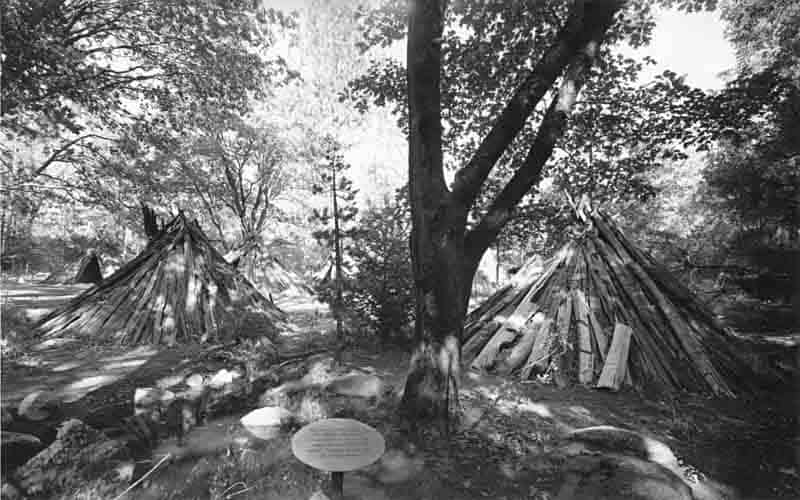
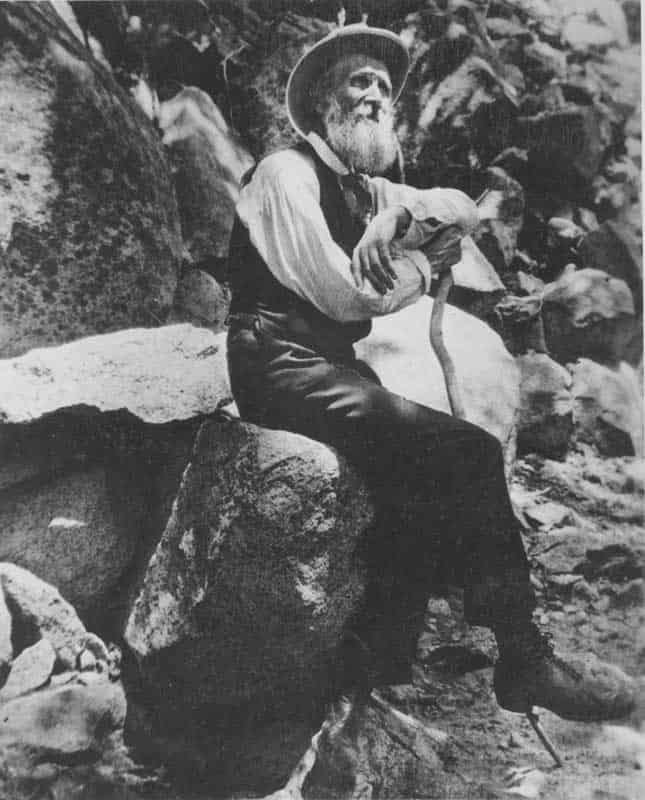
Yosemite came to the public’s attention in 1855 through an article published in the Mariposa Gazette and partially reprinted in the San Francisco Gazette.
Nine years later, Abraham Lincoln set aside the Yosemite Valley and the Mariposa Grove as a state managed public preserve. Congress created Yosemite National Park on October 1, 1890
The early stewardship of Yosemite National Park fell to the U.S. Army which was tasked with preventing logging and grazing within the Park.
These troops included Black regiments, famously known as Buffalo Soldiers. Just as they influenced the history of The West, the Buffalo Soldiers left their mark on there history of Yosemite as an emerging national treasure. They served as rangers in Yosemite National Park in the late 1890’s.
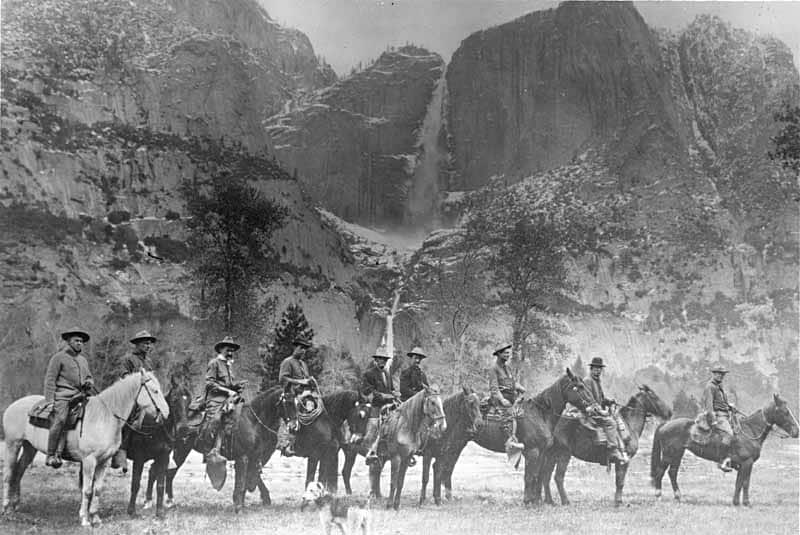
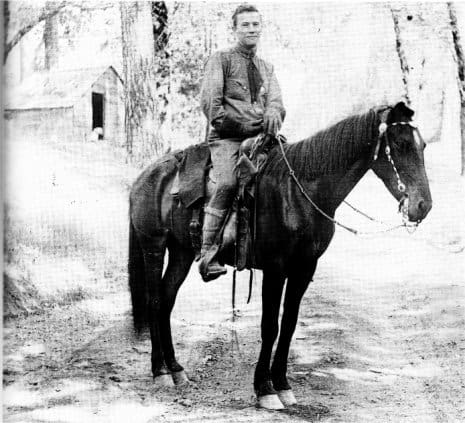
By the early 1900’s, civilian rangers replaced the soldiers. In 1919, Yosemite had 21 civilian rangers who, like today’s rangers, managed law enforcement, wildlife protection, and visitor education duties.
The current Wawona Hotel was built in 1875, but the hotel and its golf course did not become part of Yosemite National Park until 1932. The Awahnee Hotel was constructed in the Valley and opened for business in 1927.
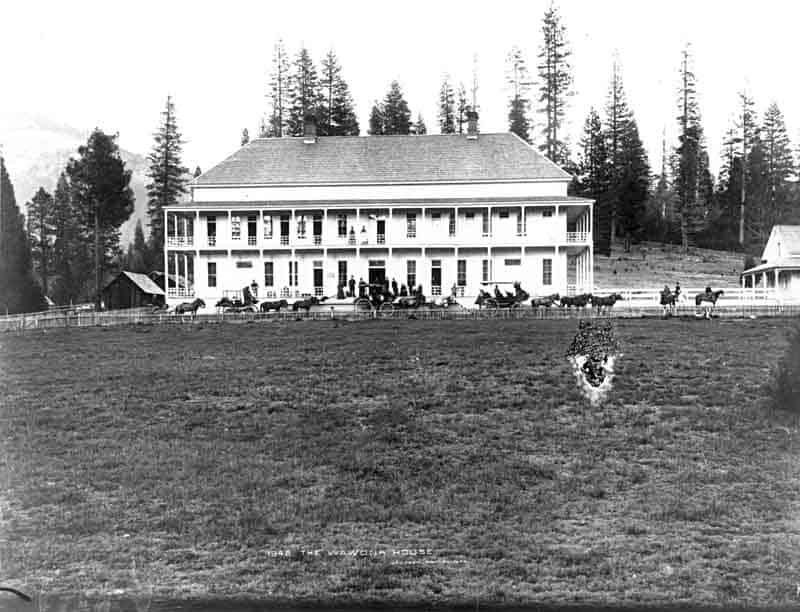
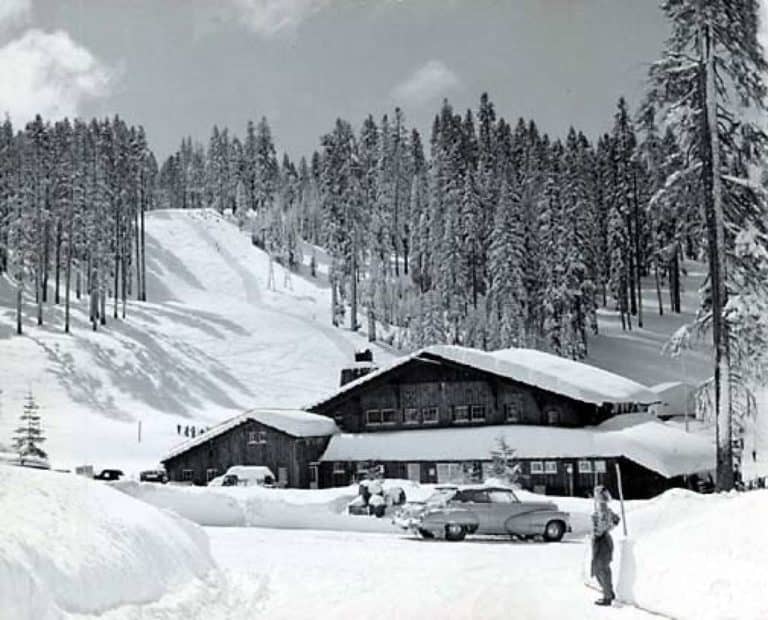
A ski school began in Yosemite in 1928 working near Camp Curry and the newly constructed Awahnee Hotel. Yosemite made a bid to host the Winter Olympics when Los Angeles was chosen to host the 1932 Summer Games. Though the bid was unsuccessful, a ski lodge was constructed at Badger Pass in 1935. The first ski lift in the West was built at Badger Pass in 1936. Twenty five thousand skiers visited Badger Pass that first season.
Two Indiana schoolteachers shaped the modern history of Yosemite. David and Jenny Curry came to Yosemite Valley in 1899. They ran a remarkably successful tent camp for visitors which led to creation of the “Camp Curry.”
The Curry influence on Yosemite grew after David Curry’s death in 1917 after which Jenny “Mother Curry” and her son-in-law David Tressider expanded the Curry family role in park concessions.
The 11 month construction of the Awahnee Hotel was completed in July, 1927. The Awahnee has been host to presidents, royals, and celebrities over the years.
